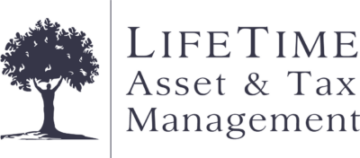Presented by Matt Glova and the team at LifeTime Asset Management
Click here to download this report.
A positive quarter for markets, despite choppy September
Markets dropped early in September before partially recovering throughout the rest of the month. The S&P 500 fell by 3.80 percent during the month, while the Dow Jones Industrial Average (DJIA) lost 2.18 percent and the Nasdaq Composite declined by 5.10 percent. Despite a disappointing September, all three indices ended the quarter in positive territory. The S&P 500 gained 8.93 percent in the third quarter, and the DJIA managed an 8.22 percent gain. The Nasdaq, with its large weighting toward technology, led the way with an 11.24 percent increase.
These results were supported by improving fundamentals during the month and quarter. According to Bloomberg Intelligence, the blended earnings growth rate for the S&P 500 fell by 31.1 percent in the second quarter. This was significantly better than expectations for a 43.6 percent decline at the start of July and for a 32.8 percent decline at the end of August.
Technical factors were also supportive during the month. All three major indices remained above their respective 200-day moving averages throughout September. This is the third straight month where the indices finished above trend. The 200-day moving average is a widely followed technical signal. Sustained breaks above or below this trend line can signal a change in investor sentiment for an index. While the continued technical support was welcome, the volatility during the month brought the indices closer to their respective trend lines. Another month of declines could cause one or more of the indices to fall below trend.
The story was much the same internationally, with a disappointing September capping off an otherwise positive quarter. The MSCI EAFE Index fell by 2.60 percent during the month but gained 4.80 percent for the quarter. The MSCI Emerging Markets Index declined by 1.58 percent for the month, but on a quarterly basis, it gained 9.70 percent. Technicals were supportive for international equities. Both indices spent the month above their respective 200-day moving averages.
Fixed income markets were down slightly in September, as rates increased modestly. The Bloomberg Barclays U.S. Aggregate Bond Index lost 0.05 percent, but on a quarterly basis, it gained 0.62 percent. Interest rates ended the quarter largely unchanged, with the 10-year Treasury yield starting and ending the period at 0.69 percent.
High-yield fixed income, which is typically less tied to interest rates and more closely correlated with equity markets, also had a challenging month. The Bloomberg Barclays U.S. Corporate High Yield Index fell by 1.03 percent during the month. It gained a respectable 4.60 percent for the quarter, driven by narrowing credit spreads, as investors became more comfortable accepting lower yields for additional credit risk.
Public health picture shows mixed results
The public health situation in the U.S. was mixed during the month and quarter. We saw a notable rise in case growth in July, but we were able to make progress in reducing local outbreaks in August and early September. More recently, however, the data has started to show some concerning signs. Although the national case growth rate finished the quarter below July’s highs, we did see an uptick in case growth toward the end of September.
The increase in cases has been gradual, but it signals that coronavirus risks may continue to rise as we head into the fall. The back-to-school season and recent Labor Day gatherings look to have had a negative effect on public health. This may drive case growth in the short term due to the lag between infection and detection.
Testing showed progress during the month. The average number of tests increased, although daily test counts were volatile. The positive test rate fell in September and ended the quarter below the World Health Organization’s recommended 5 percent level.
While September showed some progress on the public health front, there are signs that risks may be rising again. Public health data should continue to be vigilantly monitored as we work to keep the pandemic under control at a national level.
Economic recovery continues at slower pace
We saw continued evidence of economic recovery in September, but the pace of improvement slowed throughout the quarter. Despite a strong rebound in spending earlier in the summer, the data releases in September showed a slowdown in growth. Personal spending, for example, grew by 1 percent in August after rising by 1.5 percent in July and 6.5 percent in June. Looking forward, continued moderate growth remains likely.
One area where we saw notable improvement during the month was consumer confidence, which came in much better than expected. The Conference Board Consumer Confidence Index had its largest monthly increase in more than 17 years, bringing the index to its highest level since the start of the pandemic. As you can see in Figure 1, there is still a long way to go to get back to pre-pandemic levels. But after a disappointing July and August, this is certainly a step in the right direction.

